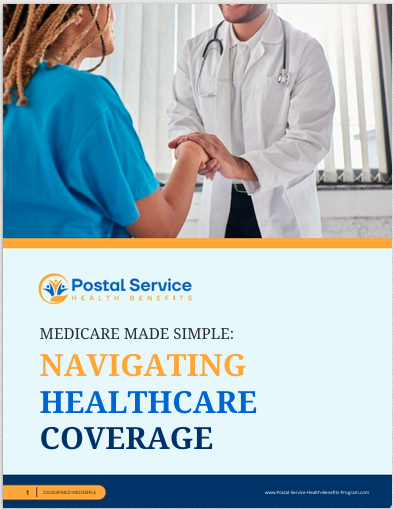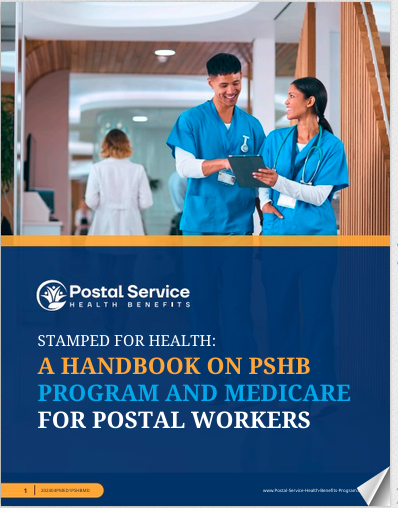Key Takeaways
-
Medicare Advantage plans are becoming a popular choice for Postal workers, offering additional benefits tailored to complement PSHB coverage.
-
Understanding the integration of Medicare Advantage with PSHB can help you make informed decisions about your health coverage options.
Exploring the Intersection of Medicare Advantage and PSHB
As a Postal worker or retiree, you may already know about the Postal Service Health Benefits (PSHB) program, which started in 2025. This program offers a range of health plan options designed specifically for Postal employees, retirees, and their eligible family members. But have you considered how Medicare Advantage plans fit into the picture? These plans, which are part of Medicare Part C, have been gaining traction among those with PSHB coverage—and for good reason.
Let’s break down why Medicare Advantage plans are capturing the interest of Postal workers and how they can enhance your healthcare coverage.
A Quick Overview of Medicare Advantage Plans
Medicare Advantage plans, also known as Part C, are an alternative to Original Medicare. These plans are offered by private companies approved by Medicare and provide all the benefits of Part A (hospital insurance) and Part B (medical insurance), often bundling additional features like prescription drug coverage, vision, dental, and hearing benefits.
For Postal workers and retirees, the appeal lies in the comprehensive nature of these plans. They’re designed to provide all-in-one coverage that complements your PSHB plan, offering more flexibility and additional benefits compared to standalone Medicare.
Why Postal Workers Are Opting for Medicare Advantage
1. Enhanced Coverage Options
One of the biggest draws of Medicare Advantage plans is the extra benefits they provide. While PSHB plans offer robust coverage, Medicare Advantage plans can add value by including services such as:
-
Vision and dental care, which may not be fully covered under PSHB.
-
Hearing aids and other specialized services.
-
Fitness programs or wellness benefits.
These additional features make Medicare Advantage plans a compelling choice for those looking to fill gaps in their PSHB coverage.
2. Integration with Medicare Part B
Medicare Advantage plans work seamlessly with Medicare Part B. For Postal retirees who are required to enroll in Part B to maintain their PSHB coverage, Medicare Advantage plans can serve as an efficient way to bundle their healthcare needs. Some plans may even offer reimbursement options for Part B premiums, helping to offset costs.
3. Cost Predictability
For many Postal workers and retirees, managing healthcare costs is a top priority. Medicare Advantage plans often come with set copayments or coinsurance amounts, making it easier to budget for medical expenses. When combined with PSHB coverage, this predictability becomes a key factor in reducing financial stress.
4. Nationwide and Local Network Choices
Medicare Advantage plans offer a mix of nationwide and localized provider networks. This is particularly advantageous for Postal workers who may relocate after retirement or need access to healthcare services across different states. With careful selection, you can find a plan that suits both your current and future healthcare needs.
Understanding the PSHB and Medicare Advantage Connection
Starting in 2025, the PSHB program has aligned itself with Medicare to provide streamlined health coverage options. If you’re a Postal retiree eligible for Medicare, enrolling in a Medicare Advantage plan can provide significant benefits. Here’s how these programs complement each other:
Coordinated Benefits
PSHB plans are designed to work in tandem with Medicare. This means you’ll experience reduced out-of-pocket costs when Medicare is your primary payer, and your PSHB plan acts as secondary coverage. Medicare Advantage plans take this a step further by bundling additional benefits, ensuring that your healthcare needs are met comprehensively.
Simplified Administration
Medicare Advantage plans can simplify your healthcare experience by consolidating your medical, hospital, and prescription drug coverage under one plan. This reduces the administrative burden of managing multiple plans and ensures you have a single point of contact for your healthcare services.
Prescription Drug Coverage
As part of Medicare Part D, most Medicare Advantage plans include prescription drug coverage. This feature is particularly valuable for Postal workers and retirees, as it eliminates the need to purchase separate drug plans, saving time and effort.
What to Consider Before Choosing Medicare Advantage
While the benefits are clear, it’s important to weigh all factors when considering a Medicare Advantage plan alongside your PSHB coverage. Here are some key considerations:
Plan Networks
Medicare Advantage plans often have network restrictions. Before enrolling, ensure that your preferred doctors, specialists, and hospitals are included in the plan’s network. This is particularly important if you’re accustomed to the broad networks offered by PSHB plans.
Annual Enrollment Periods
Remember that Medicare Advantage plans have specific enrollment periods, such as Medicare Open Enrollment from October 15 to December 7 each year. This is your opportunity to review and adjust your plan choices. Keep this timeline in mind to ensure you don’t miss out on enrolling in or switching to a plan that better suits your needs.
Out-of-Pocket Maximums
Medicare Advantage plans come with an out-of-pocket maximum, which caps your annual expenses for covered services. When paired with PSHB, this can provide substantial financial protection. Be sure to compare these limits across different plans to find the one that aligns with your healthcare budget.
How to Make the Most of Your Medicare Advantage Plan
If you decide to enroll in a Medicare Advantage plan, there are several steps you can take to maximize its benefits:
Use Preventive Services
Many Medicare Advantage plans emphasize preventive care, offering free annual wellness visits, screenings, and immunizations. Taking advantage of these services can help you stay healthy and catch potential issues early.
Review Your Plan Annually
Healthcare needs can change over time, so it’s essential to review your plan annually during Medicare Open Enrollment. Check for changes in premiums, deductibles, or coverage options to ensure your plan remains the best fit for you.
Coordinate with Your PSHB Plan
Don’t overlook the role of your PSHB plan in complementing your Medicare Advantage coverage. Ensure that both plans work together efficiently to avoid unnecessary expenses and maximize your benefits.
Common Questions About Medicare Advantage and PSHB
Here are answers to some frequently asked questions:
Q: Do I have to enroll in Medicare Advantage to keep my PSHB coverage?
No, you’re not required to enroll in Medicare Advantage. However, retirees eligible for Medicare must enroll in Part B to maintain PSHB coverage. Medicare Advantage is an optional addition that can enhance your benefits.
Q: Will my PSHB plan pay for services that Medicare Advantage doesn’t cover?
Yes, your PSHB plan acts as secondary coverage, which can help pay for out-of-pocket expenses not covered by Medicare Advantage, such as deductibles or copayments.
Q: Can I switch back to Original Medicare if I’m unhappy with my Medicare Advantage plan?
Yes, you can return to Original Medicare during the Medicare Advantage Open Enrollment Period (January 1 to March 31) or during the annual Open Enrollment period.
Is Medicare Advantage Right for You?
Medicare Advantage plans offer a unique opportunity to enhance your healthcare coverage, especially when paired with PSHB. They provide additional benefits, cost predictability, and streamlined administration that make them a popular choice for many Postal workers and retirees. However, it’s essential to carefully review your options and consider your healthcare needs before making a decision.
By understanding how Medicare Advantage integrates with PSHB, you’ll be better equipped to choose a plan that provides the coverage and peace of mind you deserve.







